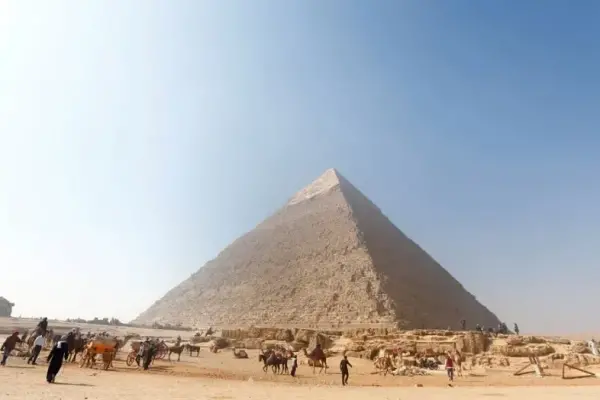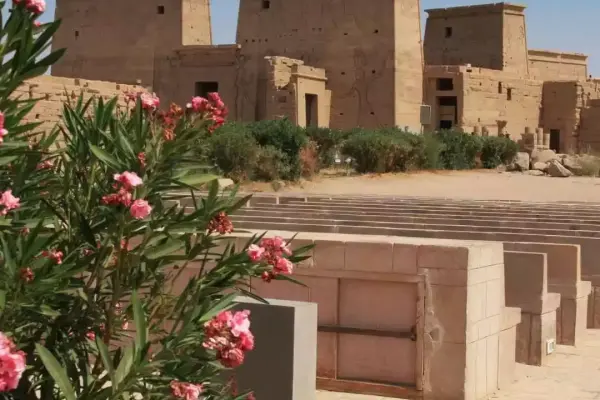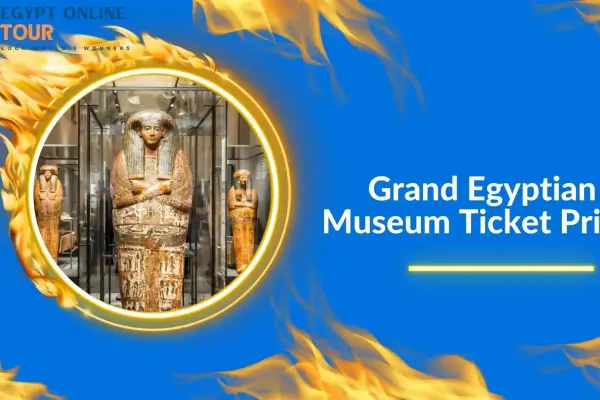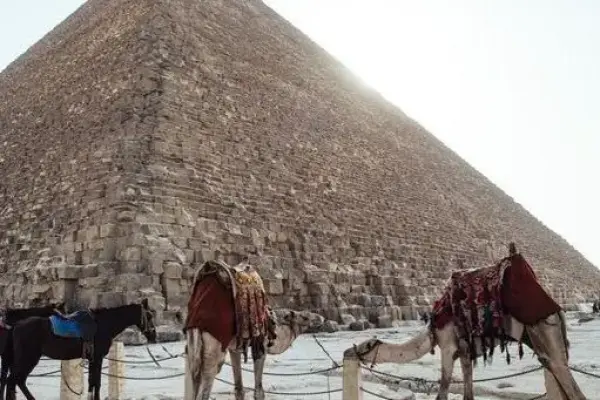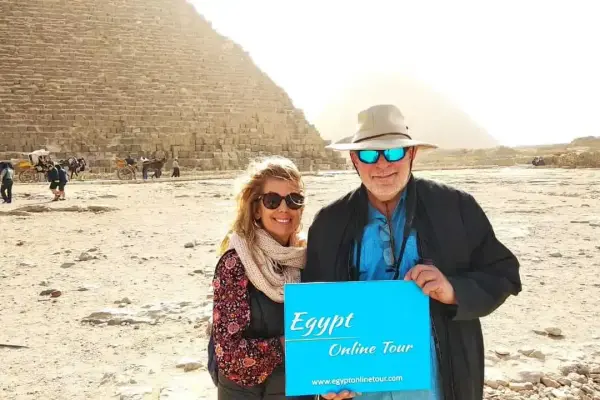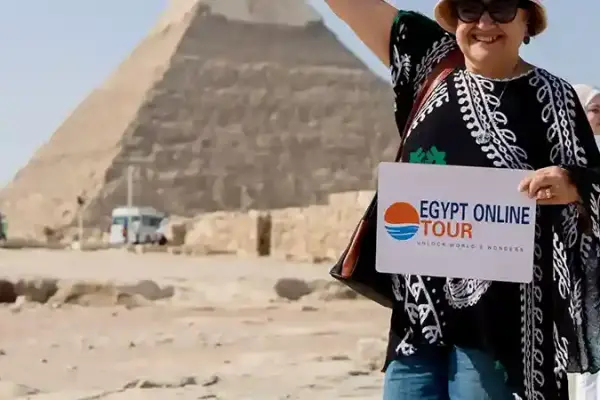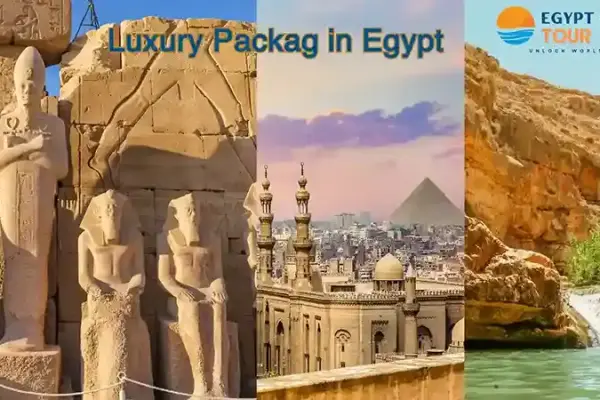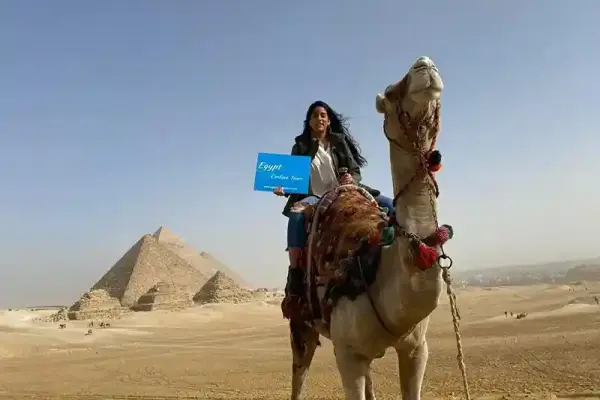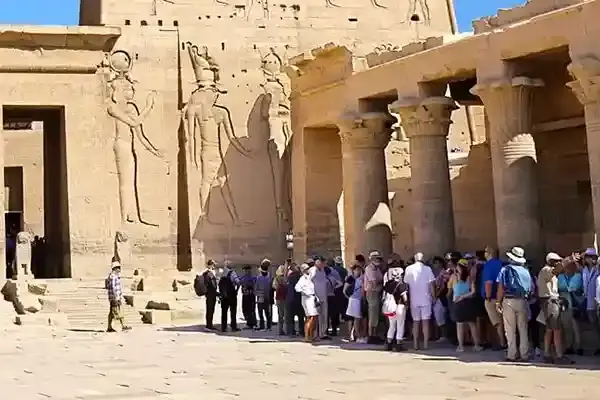In 1925, British archaeologist Howard Carter made a discovery that left the world in awe. Among the treasures of King Tutankhamun’s tomb, he found a dagger wrapped around the young pharaoh’s left thigh. But this was no ordinary blade—it was a big proof of advanced cities in ancient Egypt as it was forged from meteoric iron, a material from the stars. Even more astonishing is that the dagger contained traces of iron alloyed with other metals, suggesting that the ancient Egyptians possessed advanced metalworking knowledge that wouldn’t officially emerge until centuries later.
Table of contents [Show]
- What Did Ancient Egyptian Cities Look Like?
- 6 Facts About Ancient Egyptian Cities: The Amazing Modern World
-
List of advanced Cities in Ancient Egypt: 12 Most Famous Ancient Egyptian Cities
- Memphis (Ineb-Hedj) – The First Capital of Egypt
- Thebes (Waset) – City of Amun
- Abydos (Abdju) – Gateway to the Afterlife
- Tanis (San El-Hajar) – The Northern Centre of Amun Worship
- Herakleopolis (Henensu) – The City of Horus
- Edfu (Djebt) – The Temple of Horus
- Akhetaten (Tell el-Amarna) – The City of the Sun Disk
- Buto (Per-Wadjet) – Protector of the Delta
- Kom Ombo (Nebo) – Temple of Sobek and Horus
- Western Thebes – The Land of Eternal Rest
- Alexandria – The Lighthouse of Civilization
- Heliopolis (Iunu) – The City of the Sun
- Complex Institutions in Ancient Egypt
- Advanced Cities in Ancient Egypt
- Tours to Ancient Egyptian Cities
- Specialized Workers in Ancient Egypt
- How Many Advanced Cities in Ancient Egypt?
- What Are the Cities of Ancient Egypt?
- FAQs:
What Did Ancient Egyptian Cities Look Like?
The cities of Ancient Egypt thrived along the life-sustaining Nile River, utilizing its fertile banks for agriculture. Enclosed by protective walls with main entrances, these cities featured wide central roads connected to narrower streets, with buildings constructed from mud-brick. When structures were damaged, they were often rebuilt on top, creating layered settlements over time.
- Cities served various purposes: political centers like Memphis housed administrators, religious towns formed around grand temples as connections to the gods, and worker villages supported monumental projects like the pyramids. As stated in *The Dawn of Conscience*, “The ancient Egyptian saw his cities as reflections of his ability to organize life and overcome nature’s challenges.”
- These cities were microcosms of ingenuity and social order, offering timeless insights into a remarkable civilization.
Read about: When Did Ancient Egypt Start and End
6 Facts About Ancient Egyptian Cities: The Amazing Modern World
Based on insights from Dawn of Conscience by James Henry Breasted and modern studies, ancient Egyptian cities were complex and diverse, reflecting the sophistication of this remarkable civilization As noted in The Dawn of Conscience, “Egyptian cities were masterpieces of organization, showcasing the harmony between human ambition and nature.”
Here are some fascinating facts about these cities:
- Built Along the Nile River
- Urban Layout ( Walls, Central Roads, Mud-Brick Construction )
- Specialized Citieslike( Political Capitals, Religious Centers, Worker Settlements)
- Economic Hubs
- Spiritual Influence
- Legacy in Archaeology:
The cities of ancient Egypt were not just places to live—they were dynamic ecosystems of political, religious, and economic activity, offering a glimpse into the ingenuity and organization of one of history’s greatest civilizations.
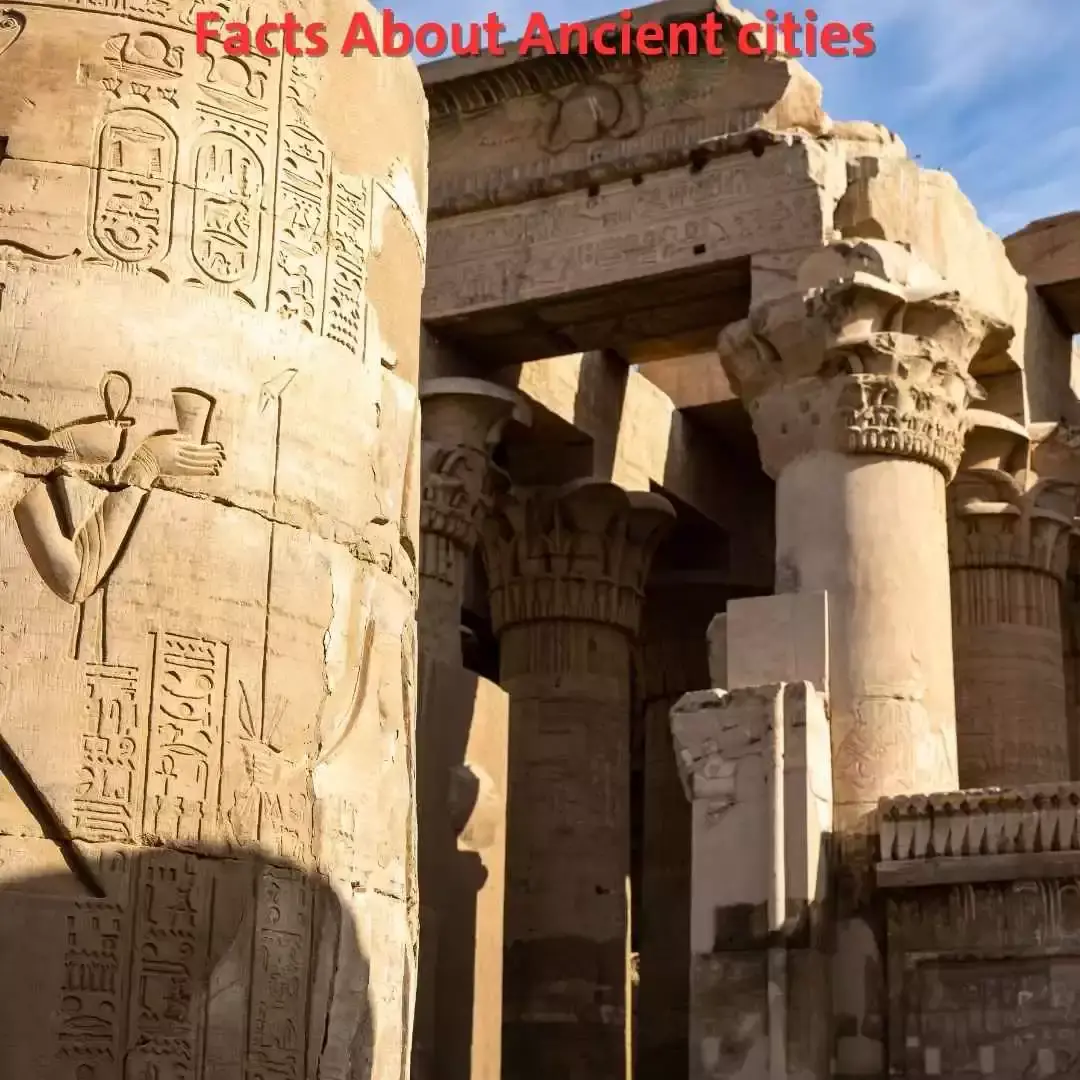
List of advanced Cities in Ancient Egypt: 12 Most Famous Ancient Egyptian Cities
Each ancient Egyptian city tells a unique story, forming an essential part of the civilization’s legacy. Here’s a list of advanced cities in Ancient Egypt, each notable for its unique contributions to the civilization:
Memphis (Ineb-Hedj) – The First Capital of Egypt
Memphis, also known as Ineb-Hedj, meaning "The White Walls," was the first capital of Egypt, established by King Menes about 3100 BCE. Because it was at the juncture between Upper and Lower Egypt, it acquired an important role as the central place of the administration and religion of the kingdom. It housed the temple of Ptah, the god of creation and craftsmanship; thus, the city became the hotbed of innovations and cults.
According to Herodotus, Memphis was a "marvel of architecture and planning," famous for its colossal statues and brisk trade. It was also a center for craftsmen, who produced beautiful sculptures and monuments that epitomized the art of ancient Egypt. Though there is little left today, Memphis's legacy endures as the birthplace of centralized governance and monumental architecture.
Thebes (Waset) – City of Amun
Thebes or Waset rose to prominence during the Middle and New Kingdoms as the Egyptian religious and administrative capital. Thebes was the place of the chief deity Amun in the New Kingdom with the famous temples of Karnak and Luxor. The temples were not only places of worship but also signs of the pharaohs' divine power and the wealth of Egypt.
It is not less grand that Homer called it the "City of a Hundred Gates," showing how significant it was in importance and strategy. Thebes was important to the unification of Egypt when the country experienced instances of fragmentation and earned the city a great reputation for being strong and magnificent.
Abydos (Abdju) – Gateway to the Afterlife
Abydos, or Abdju, was one of the most sacred cities of ancient Egypt. It was considered the burial site of Osiris, the god of the afterlife. The city became a place of pilgrimage for those seeking a connection with divinity and a blessed afterlife. The city was home to the magnificent Temple of Seti I with intricate reliefs and the well-known Abydos King List, a list of Egyptian rulers in chronological order.
According to the archaeologist Flinders Petrie, Abydos was described as "a city of mysteries," regarding the depth of its religious significance with the presence of royal tombs even before the pyramids. Abydos connected the worlds of mortals and eternity, making it one of the spiritual epicenters of ancient Egypt.
Tanis (San El-Hajar) – The Northern Centre of Amun Worship
Tanis or San El-Hajar became a political and religious center of the Nile Delta during the 21st Dynasty. Reputedly the "Northern Thebes," Tanis became an important cult center of Amun with great temples dedicated to that potent deity. It was also a royal necropolis where the tombs of the pharaohs, like Psusennes I, were resplendently decorated in gold.
Egyptologist Pierre Montet called Tanis "a hidden treasure trove," and even more so when he discovered the royal tombs in it during the 20th century. The city's architectural feats, coupled with its religious significance, made it a vital center of influence in Lower Egypt.
Herakleopolis (Henensu) – The City of Horus
Herakleopolis or Henensu was an important center during the First Intermediate Period and early Middle Kingdom. Renowned for the cult of Horus, it was also an important administrative center. The town developed extensively under rulers who wished to reunite Egypt after political chaos.
According to Egyptologist Dieter Arnold, Herakleopolis was "a beacon of resilience during times of uncertainty." Its proximity to major trade routes further enhanced its influence, fostering a rich cultural and economic environment.
Edfu (Djebt) – The Temple of Horus
Edfu, or Djebt, is perhaps best known for the Temple of Horus, among the most well-preserved temples in Egypt, dating to the Ptolemaic period. This architectural gem features delicate carvings, mythological scenes, and high columns, with the city paying obeisance to Horus, the falcon-headed god of protection.
As Egyptologist Amelia Edwards described it, the Temple of Horus was "a living storybook of Egyptian religion and art." Besides its architectural genius, Edfu played a major role in regional trade and religious ceremonies, thus being a cultural treasure of all of Upper Egypt.
Akhetaten (Tell el-Amarna) – The City of the Sun Disk
Akhetaten, modern Tell el-Amarna, was originally founded by Pharaoh Akhenaten in the 14th century BCE as the new capital in the prime worship of Aten—the sun disk. The said city expressed a break within Egypt's religious practice, moving from traditional polytheism into the monotheist ways of Aten.
Akhenaten envisioned Akhetaten to be utopian, containing open spaces and temples where homage was paid to the sun. Historian Nicholas Reeves described it as "a bold experiment in faith and government alike." While the city was abandoned after the rule of Akhenaten, art, and architecture expressing naturalism that were used in the design of Akhetaten eventually influenced Egyptian culture for ages.
Buto (Per-Wadjet) – Protector of the Delta
Buto or Per-Wadjet is one of the oldest cities in Egypt, considered to be the residence of Wadjet, Lower Egypt's protective cobra goddess. It was strategically located in the Nile Delta and functioned as the religious and political center of the Predynastic and early Dynastic periods.
As the famous archaeologist Flinders Petrie has said, Buto "is a cornerstone of early Egyptian civilization," since the place finally united Upper and Lower Egypt under the pharaohs. The sacred mounds and shrines attest to the contribution of this city to Egyptian mythology and governance over the centuries.
Kom Ombo (Nebo) – Temple of Sobek and Horus
Kom Ombo, or Nebo, boasts an incomparable double temple, one for Sobek, the god of the crocodile, and one for Horus, the falcon-headed god. An architectural wonder from the times of the Ptolemies, it reflects perfectly those dualities of Egyptian conceptions: a symmetrical sanctuary for both gods. The medical reliefs within this temple are amongst the most interesting and tell volumes about ancient Egyptian medicine.
According to Egyptologist Zahi Hawass, Kom Ombo was "a masterpiece in coexistence, a marriage between mythology and practicality." The site also has a crocodile museum with mummified crocodiles that evidence the importance of Sobek.
Western Thebes – The Land of Eternal Rest
The huge Western Thebes, opposite the Nile from Luxor, served as a necropolis for pharaohs and nobles. It contains the Valley of the Queens, the burial site for the royal women, and a number of mortuary temples, including the splendor of Hatshepsut's temple. This sacred area is symbolic of the deep respect the Egyptians had for the afterlife.
As the famous words of archaeologist Howard Carter made clear, Western Thebes constitutes "a city of the dead that speaks volumes of the living." Its richly decorated tombs offer unparalleled feats of artistry and insight into ancient rituals.
Alexandria – The Lighthouse of Civilization
Alexandria was founded by Alexander the Great in 331 BCE and almost immediately took on a very important position in regard to knowledge, trade, and culture. Its famous library, one of the largest in the ancient world, attracted scholars from across the Mediterranean, while the Lighthouse of Pharos stood as a symbol of innovation and maritime power.
According to the historian Strabo, Alexandria was "a melting pot of ideas and people," fusing Egyptian, Greek, and Roman influences. Though its roots are truly ancient, Alexandria is anything but a dead city. It is still alive and well, celebrating its heritage as a haven for learning.
Heliopolis (Iunu) – The City of the Sun
Heliopolis, more commonly known as Iunu, was the spiritual hub dedicated to the sun god, Ra. It had its more ordinary designation, the "City of the Sun," complete with its magnificent Sun Temple and famous Benben stone, reputed to be the first clump of land from the primal waters.
According to historian Geraldine Pinch, Heliopolis was "the intellectual heart of Egypt, where priests elaborated the astronomical and theological ideas" that influenced Egyptian religion in its entirety. Though little remains today, its influence on solar worship and architecture resonates across Egyptian history.
As The Dawn of Conscience notes, “Egyptian cities intertwined religion, culture, and innovation, creating enduring legacies.”.These cities collectively showcase the ingenuity, culture, and spiritual depth of Ancient Egypt.
See How wonderful Egypt is with Egypt Luxury Tours
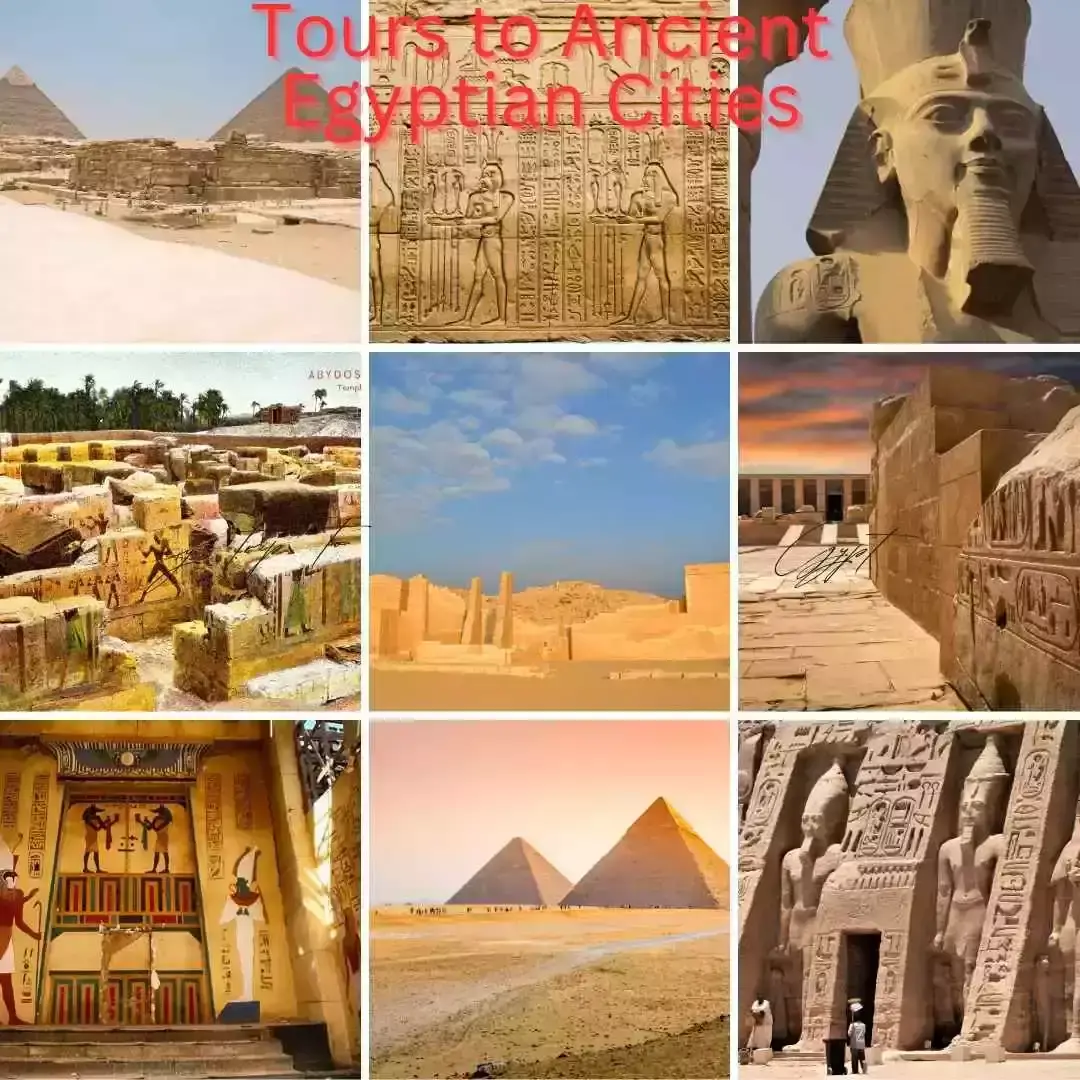
Complex Institutions in Ancient Egypt
Ancient Egypt had a highly organized society with several complex institutions:
- Religion: Central to Egyptian life, with temples, priests, and gods playing a crucial role in politics and daily life.
- Government: The pharaoh was the supreme ruler, supported by officials who managed tax collection, justice, and military affairs.
- Law: Egypt had a legal system based on the principle of Ma'at (truth and justice), ensuring social order.
- Economy: Agriculture was the foundation of the economy, with a sophisticated taxation and labor system.
- Education: Scribes were highly trained in reading and writing, essential for administration and record-keeping.
- Military: Egypt maintained a strong military force to defend its borders and maintain control over its territories.
Read about: What Did Craftsmen Do in Ancient Egypt?
Advanced Cities in Ancient Egypt
Ancient Egypt was home to several advanced cities that highlighted the sophistication of its civilization:
- Memphis (Ineb-Hedj) (𓉲 𓌨): Founded around 2300 BCE by King Menes, it was Egypt’s first capital and a hub for religion and culture, boasting the grand Temple of Ptah. Its strategic location at the Nile Delta facilitated trade and governance.
- Thebes (Waset) (𓏠 𓌂): A flourishing center in the 16th century BCE, Thebes served as a religious and administrative hub. Its monumental temples, Karnak and Luxor, demonstrated advanced engineering and devotion to the gods.
- Abydos (Abdju) (𓂝 𓇋𓈖): Known for its sanctity, Abydos was dedicated to Osiris. It featured intricate royal tombs and temples, showcasing Egypt’s architectural brilliance.
As The Dawn of Conscience states, “Each Egyptian city was a testament to the ingenuity and spiritual depth of its people.” These cities were vital to Egypt’s progress, leaving behind legacies that inspire awe today.
Tours to Ancient Egyptian Cities
Visitors today can explore several ancient Egyptian cities that remain major tourist destinations. Discover the Wonders of Ancient Egyptian Cities.
Step into history and explore legendary destinations:
- Giza: Home to the Pyramids and Sphinx.
- Luxor: Thebes, Karnak, and Valley of the Kings.
- Abu Simbel: Temples of Ramses II.
- Alexandria: Founded by Alexander the Great.
- Aswan: Temple of Philae and Nubian heritage.
- Cairo: Egyptian Museum and Giza Plateau.
Mark Twain once remarked, "Egypt is the cradle of human history, and its ancient ruins speak volumes of its grandeur."
Discover the greatness of ancient Egypt in 8 Days Cairo, Luxor, Aswan Classic Tours
Specialized Workers in Ancient Egypt
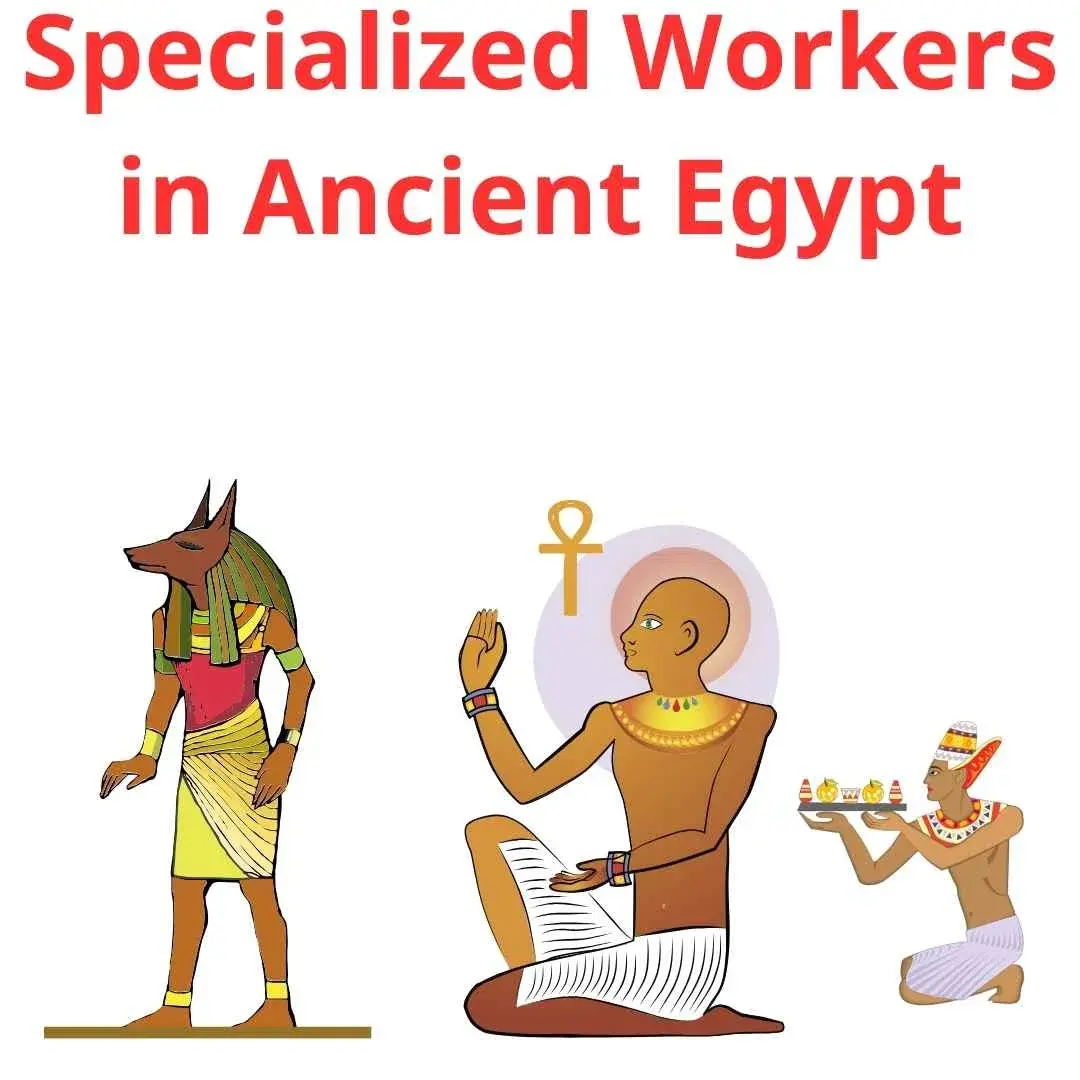
The success of Ancient Egypt rested on its skilled workforce, each contributing to its greatness. Ancient Egypt had a highly specialized workforce, with people trained for specific tasks. These workers included:
- Scribes: Responsible for recording official documents, laws, and religious texts.
- Artisans: Skilled workers who created jewelry, pottery, and sculptures.
- Architects: Responsible for designing and constructing monumental structures like temples and pyramids.
- Priests: Religious specialists who performed ceremonies and maintained temples.
- Farmers: The backbone of the economy, responsible for producing crops along the Nile.
- Soldiers: Warriors who protected Egypt and participated in military campaigns.
- Merchants: Traders who facilitated the exchange of goods both within Egypt and with neighboring regions.
As Herodotus famously observed, "Egypt is the gift of the Nile, and its people the craftsmen of its wonder."
Read about: Why Was The Middle Kingdom a Golden Age for Egypt
How Many Advanced Cities in Ancient Egypt?
Ancient Egypt had several advanced cities, each with its unique significance. The most notable include:
- Memphis
- Thebes
- Alexandria
- Abydos
- Heliopolis
- Amarna
- Tanis
- Edfu
- Karnak
- Giza
In total, several key cities thrived in different periods of Egypt's long history, contributing to its cultural, political, and religious development.
Maybe you would like to Read: Egyptian Empire Time Period
What Are the Cities of Ancient Egypt?
The cities of Ancient Egypt were strategically located along the Nile River, which provided fertile land for agriculture, easy transportation, and trade. Some of the most famous cities include:
Memphis (Capital of the Old Kingdom):
- Location: Located south of Cairo, near the Saqqara area.
- Historical Significance: Served as the capital of Egypt during the Old Kingdom.
- Function: Acted as a political and administrative center.
- Key Landmarks: Includes the Statue of Ramses II and the royal necropolis of Saqqara.
- Religion: Centered around the worship of the god Ptah.
Thebes (Capital of the New Kingdom):
- Location: Situated in Upper Egypt, near modern-day Luxor.
- Historical Significance: Was Egypt's capital during the New Kingdom.
- Key Landmarks: Includes the Karnak Temple, Luxor Temple, and the Valley of the Kings.
- Religion: A significant center for the worship of Amun-Ra.
- Fame: Known as the site of major religious festivals.
Abydos (A Sacred City):
- Location: Found near Sohag in Upper Egypt.
- Religious Significance: Known for worshiping Osiris, the god of the underworld.
- Key Landmarks: Features the Temple of Seti I and the legendary tomb of Osiris.
- Symbolism: A pilgrimage site in ancient Egyptian religion.
- Role: Considered a gateway to the afterlife.
Heliopolis (City of the Sun):
- Location: Northeast of modern-day Cairo.
- Religious Significance: Renowned for worshiping Ra, the sun god.
- Key Landmarks: Includes the obelisk of Senusret I, one of the remaining relics.
- Role: Served as an intellectual and religious hub in ancient times.
- History: Played a key role in solar cults.
Alexandria (A Cultural Hub):
- Location: Situated on the Mediterranean coast in northern Egypt.
- Historical Significance: Founded by Alexander the Great, it became a cultural and scientific center.
- Key Landmarks: Known for the Great Library of Alexandria and the Lighthouse of Alexandria, one of the Seven Wonders of the Ancient World.
- Role: Acted as a crossroads for civilizations and cultures.
- History: Thrived during the Ptolemaic and Roman periods.
Crocodilopolis (City of Crocodiles):
- Location: Located in the Fayoum region.
- Religious Significance: A center of worship for Sobek, the crocodile god.
- Key Landmarks: Known for its temple dedicated to sacred crocodiles.
- Role: Combined agricultural and commercial activities with religious practices.
- Fame: Famous for raising sacred crocodiles in nearby lakes.
Aswan (Gateway to Nubia):
- Location: Found in southern Egypt along the Nile.
- Economic Significance: A vital trade hub between Egypt and Nubia.
- Key Landmarks: Includes the Philae Temples, Elephantine Island, and the Unfinished Obelisk.
- Resources: Renowned for its granite quarries.
- Role: A key cultural and economic center in ancient times.
Amarna (City of Akhenaten):
- Location: Situated in the modern-day Minya Governorate.
- Religious Significance: Built as a center to worship Aten, the sun disk god.
- Founder: Established by King Akhenaten.
- Key Landmarks: Features the royal palace, houses, and workshops.
- Role: Served as the focal point for Akhenaten’s religious and political reforms.
- History: Abandoned after Akhenaten’s death.
These cities served as political, religious, and cultural centers, playing vital roles in the flourishing of ancient Egyptian civilization.
Read about: Architectural achievements of Ancient Egypt
FAQs:
What were the key features of ancient Egyptian cities?
Ancient cities featured protective walls, central roads, mud-brick buildings, and layered settlements due to reconstruction.
Which were the most notable cities in ancient Egypt?
Cities like Memphis, Thebes, Alexandria, and Abydos were key political, religious, and cultural hubs.
What roles did specialized workers play?
Scribes, priests, artisans, and farmers contributed to administration, religion, craftsmanship, and agriculture in these cities.
Summary:
Ancient Egyptian cities, like Memphis, Thebes, and Alexandria, demonstrated advanced urban planning, specialized purposes, and exceptional ingenuity, thriving along the Nile River. Do not wait to see you and book your Egypt Tour Packages with us.
Popular Categories
Popular Posts

Top Alexandria Beaches You Must Visit 2026
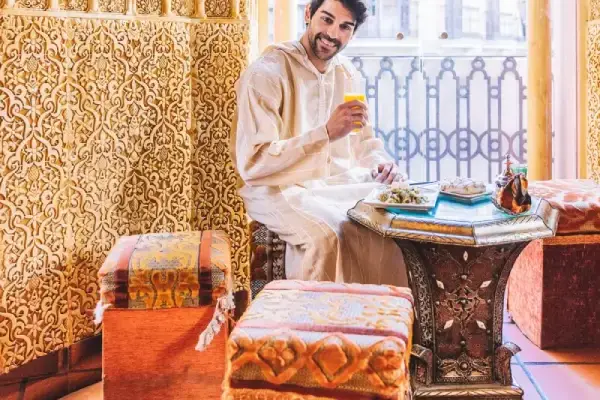
What are the important holidays in Egypt?
